My spring weekends are rarely spent laboring in the garden, but most often stumbling along rocky trails with my wife in our nearby Blue Ridge Mountains. An hour or two might be spent early one morning roaming the garden to catch up on anything missed during the workweek, but then Barbara and I are off to the mountains. Here, I’ve been inspired to add many plants to the garden.
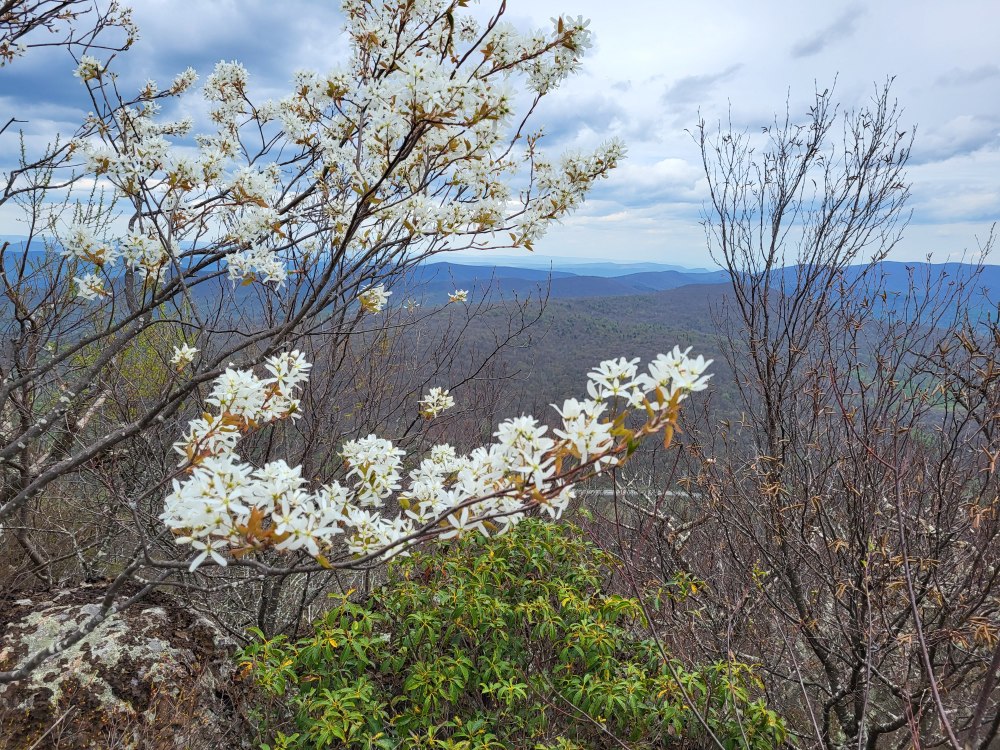
As a concession to age, we prefer to hike trails that begin with an uphill and end with gravity pulling us to the bottom, but for weeks in April and May the choice of trails is dictated by the botanical treasures growing on a particular trail. Once we discover favorite plants on a trail, the date is noted and it’s likely we’ll back to explore until the day our weary legs can no longer climb. I expect the trail side plants are not as exciting for Barbara as they are for me, but she doesn’t complain and she’s gotten quite good at identification.
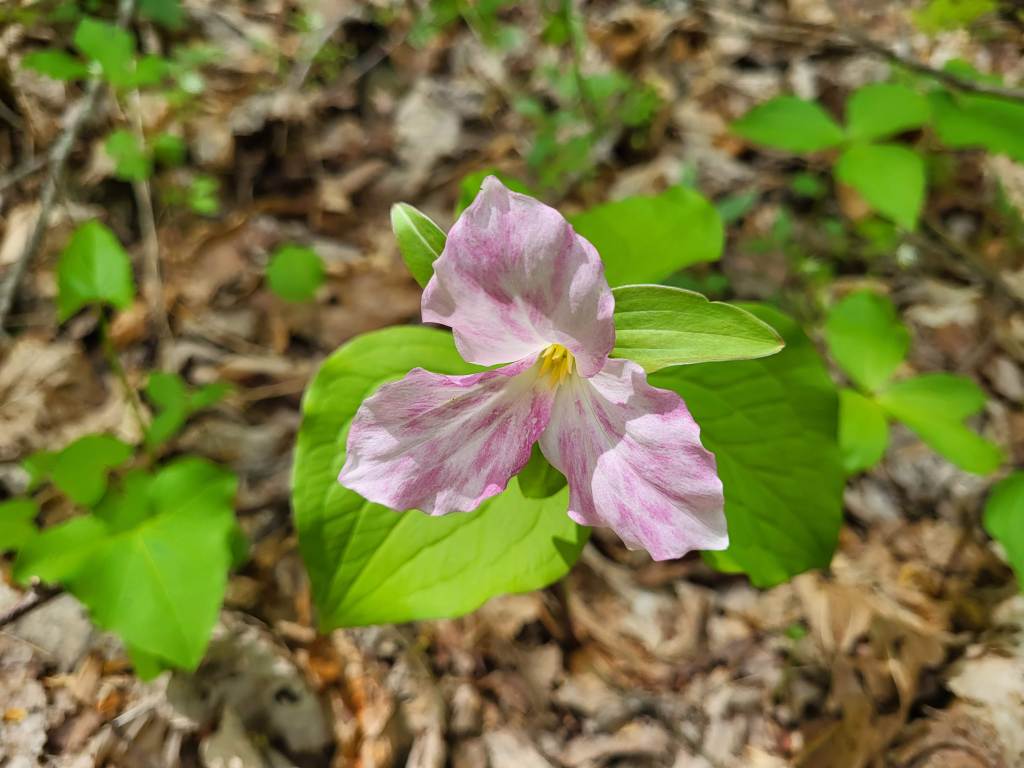
There are now abundant trilliums in the garden fading from flower, with many seedlings appearing this spring, but my wife and I anxiously await the weekend in late April when large drifts of trilliums line a local trail. At the trailhead, at nine hundred feet elevation, the white flowered trilliums (Trillium grandiflorum) are now fading to pink (above), but twenty-two hundred feet higher the blooms are fresh and pure white.

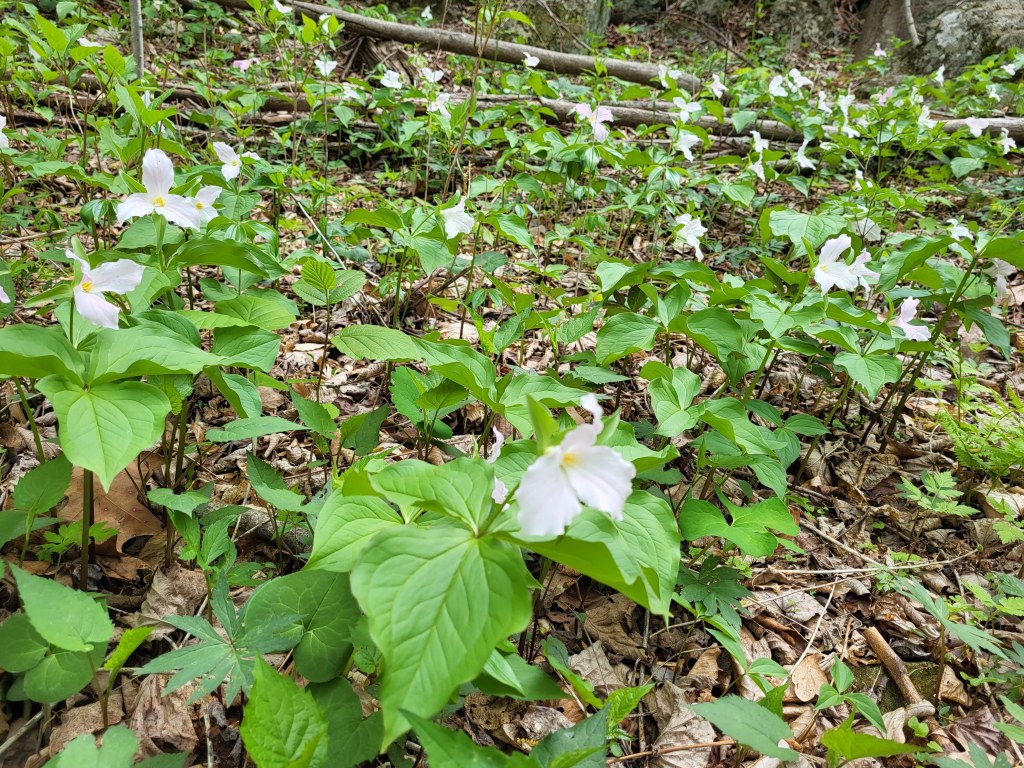
While trilliums are what attracts us to this trail, in recent years Barbara and I have focused our attention on the many native orchids growing in local forests. Today, at the start of the trail, we see scattered Showy orchids (Galearis spectabilis, below), one that my wife adores. To my thinking, the Showy orchids do not stand out by comparison to other orchids, in particular compared to a group of lady slippers (Cypripedium) we see at the mountain’s peak that are a few days from flowering.
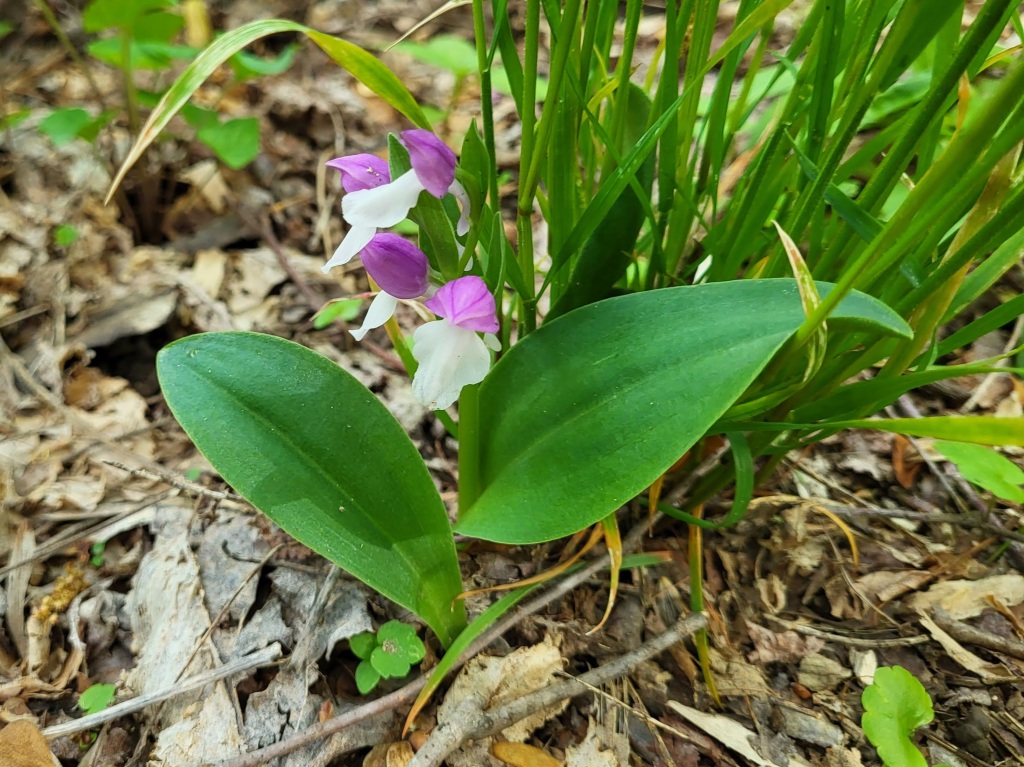
We will not be climbing twenty-two hundred feet again in a few days to witness this bloom (below). Instead, we’ll be off to another trail with many times the number of trilliums and a few scattered patches of yellow lady slippers that we’ve visited in recent years.
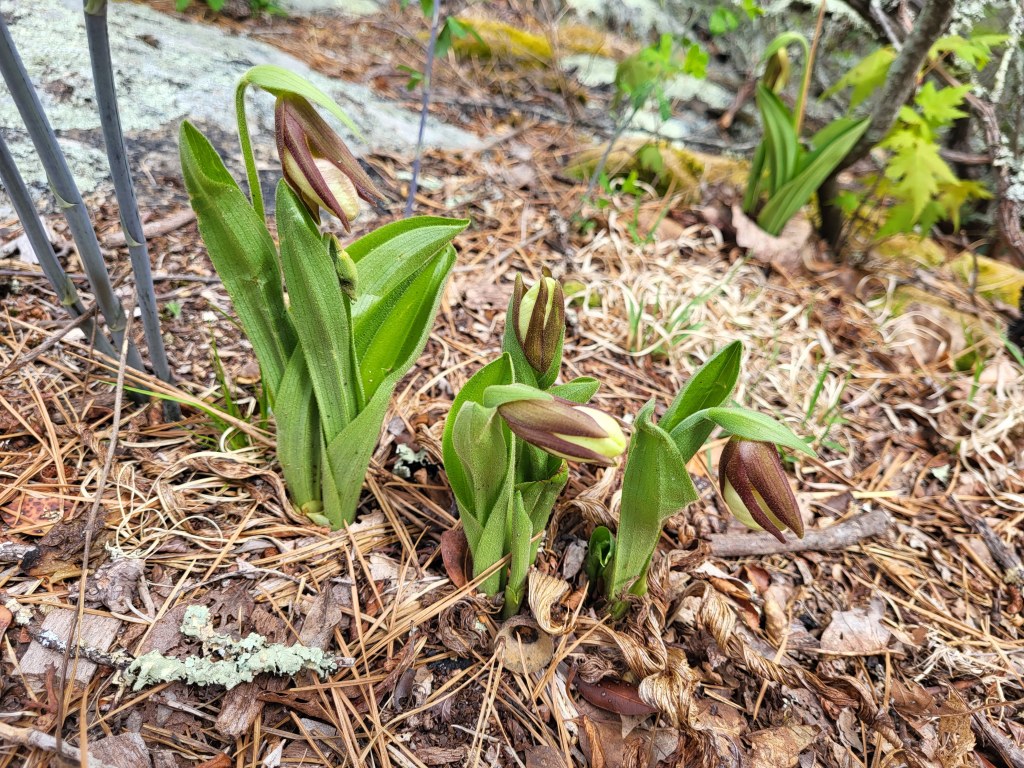
While evergreen azaleas and the earliest of the deciduous ones are flowering in the garden, fragrant Pinkster azaleas (Rhododendron periclymenoides, below) are just beginning to flower on the trail. I say fragrant because I can usually smell them despite a poor sense of smell. Today, I couldn’t smell a thing, though Barbara could.
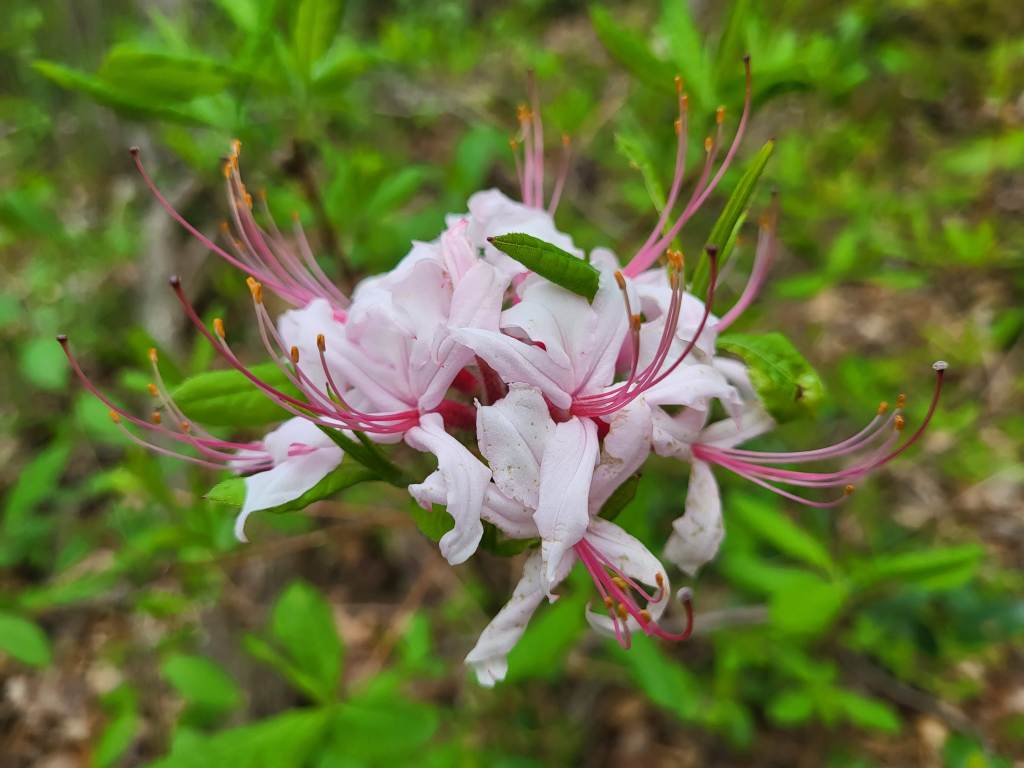
And, it’s not only flowers we enjoy. The edges of trails typically have a bit more sunlight than deeper into the forest, so often foliage and flowers grow more densely where they are most easily seen. Below are a few more of the jewels discovered on this late April trek.
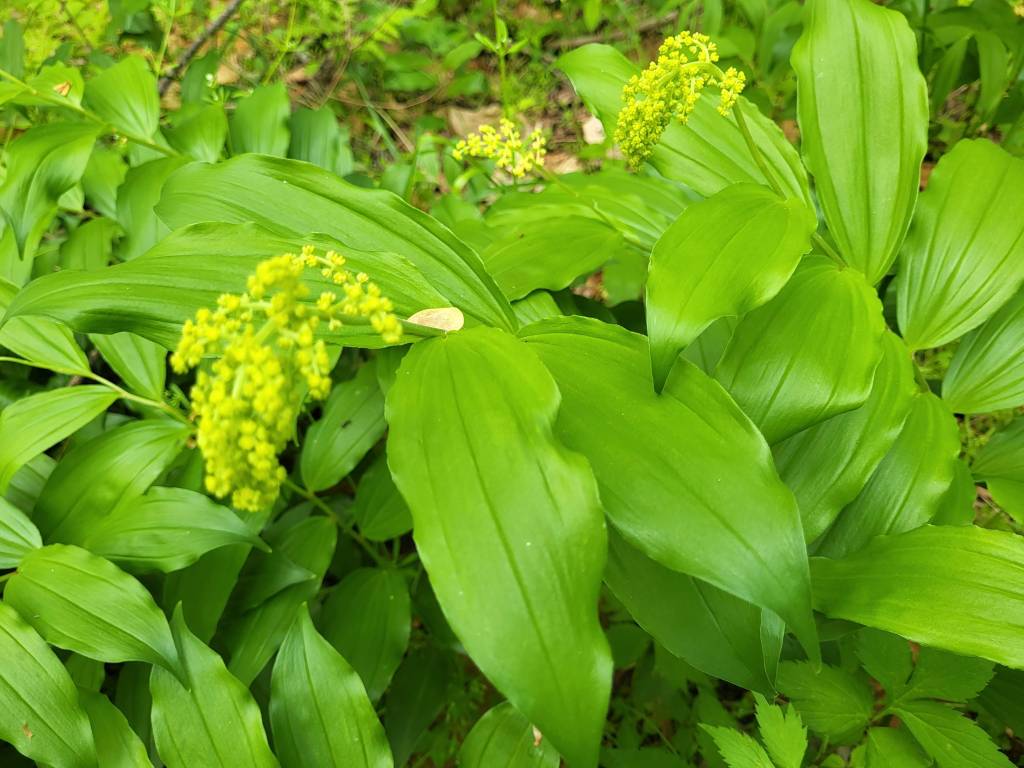



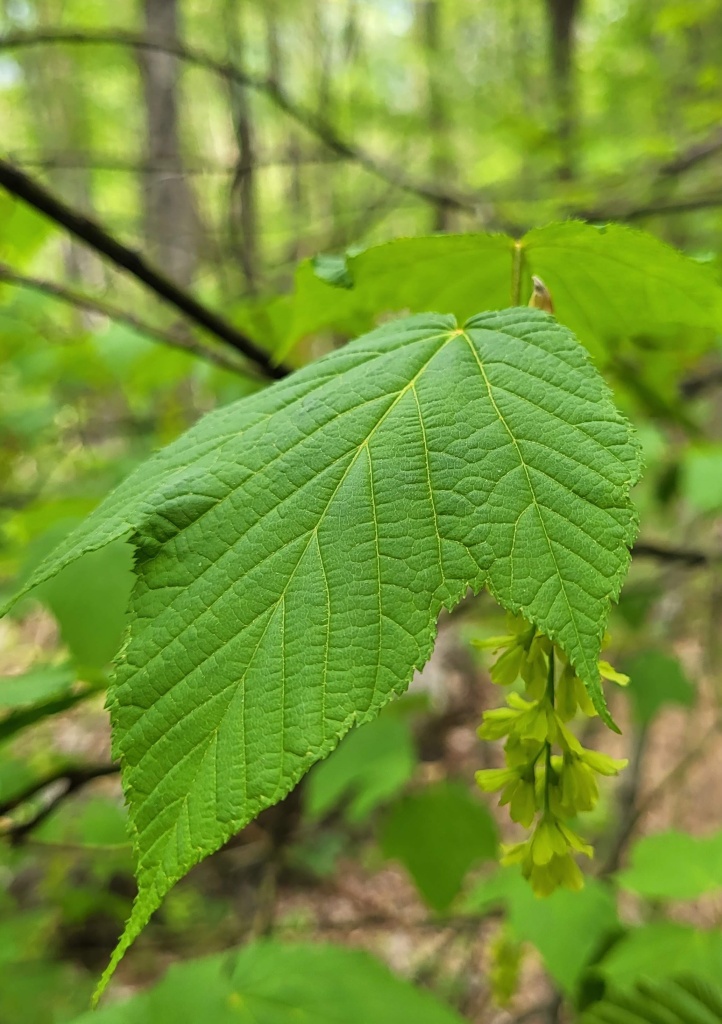

As a little kid, I grew up in lower Wisconsin, and loved to walk the fields in spring looking for early flowers. One of my favorites was trilliums. Unfortunately, here in southern NH, I rarely see them. On the other hand, I now see lots of flowers and shrubs that I planted coming into bloom, making spring my favorite time of the year!
I enjoy seeing some of the woodland flowers in the garden, then seeing them a few weeks later in the wild.
Thanks for the photos of trilliums! I just received some more bare root trilliums that I will plant next to the one that sprouted in my yard. Do you fertilize them? My instructions say that once they are established I should fertilize them. I have no experience fertilizing anything in my garden, but maybe I should.
To my thinking, fertilizing is an unnecessary expense with the exception of plants in containers. My clay soil is high in nutrients, and I allow leaves to decay in place , so this is all plants need. Some sandy soils might need additional organic material or fertilizer, but most soils do not.
Thanks very much. I will rely on my soil to give them their needed nutrients. Thanks!